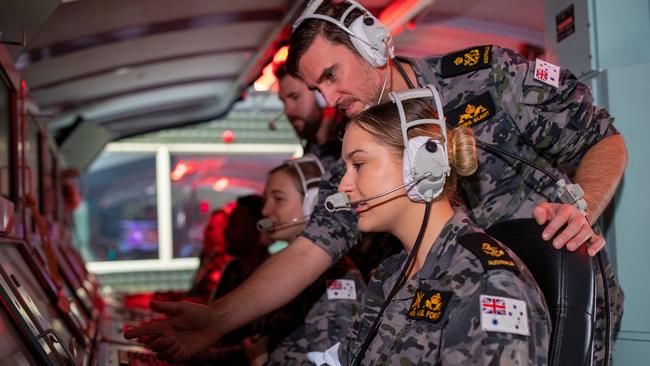Experts warn future Australian Navy nuclear-powered submarines are at risk of being understaffed
The Australian Navy is facing a huge fight to rapidly grow its submarine workforce amid poaching from the private sector – and it’s starting with money.
SA News
Don't miss out on the headlines from SA News. Followed categories will be added to My News.
Australia’s future nuclear-powered submarines are at risk of being understaffed, experts warn, unless Defence boosts training programs and increases the pay for its submariner workforce, which must triple in size over the coming decades.
Australian submariners are in line for a major pay boost next year after the Director General of Submarines, Commodore Tom Phillips, revealed the navy’s remuneration packages would be “contemporised”.
But concerns remain a target to grow the submarine workforce from about 850 to 2500 sailors won’t be met due to limited opportunities to gain experience on nuclear-powered boats.
Senior Defence Force Welfare Association member Les Bienkiewicz said a pay increase was essential to make it harder for private businesses in industries like mining to poach submariners, who are highly desired for their discipline and advanced skills.

“The problem is there are such highly technical skills that are needed, and those skills are also needed in civilian (industries), so there’s a lot of competition for highly qualified technical people,” Mr Bienkiewicz said.
“(Defence) have got a battle on their hands. But we can offer other things – we can offer service to the country, good superannuation, good medical care and other things which is part of the total package.”
The lowest navy rank of Seaman commands a base salary of $66,855, with opportunities to rise as high as $214,091 for the prestigious rank of Captain.
Navy workers posted on a submarine are entitled to a $17,598 per-year allowance, while sailors on ships receive $11,731. Navy personnel are entitled to extra bonuses for continuing service and taking on increased responsibilities.
A Defence spokesman said the bonus payments were “designed to retain submariners within the submarine capability and encourage personnel to serve at sea”.
“In addition to financial incentives, the submariner package includes a number of non-financial benefits including block leave periods and enhanced career management,” the spokesman said.

Speaking at the Submarine Institute of Australia’s annual conference this week, Commodore Phillips said the remuneration for submariners would be “contemporised going forward”.
Marcus Hellyer, a senior analyst at the Australian Strategic Policy Institute, raised serious concerns about training opportunities for new submariners.
“Developing the workforce will probably be one of the biggest challenges to the whole transition process,” Dr Hellyer said.
“How you keep the Collins-class going and generate a surplus number of submariners to transition to (nuclear) will be hard, particularly as the Collins ages, which will probably affect its at-sea days.
“If you’re not going to sea, you’re not training submariners.”
Defence has started sending some navy personnel to train on Virginia and Astute class submarines in the US and UK.
The Defence Force Remuneration Tribunal is set to finalise the submariner pay review next year.
More Coverage
Originally published as Experts warn future Australian Navy nuclear-powered submarines are at risk of being understaffed





